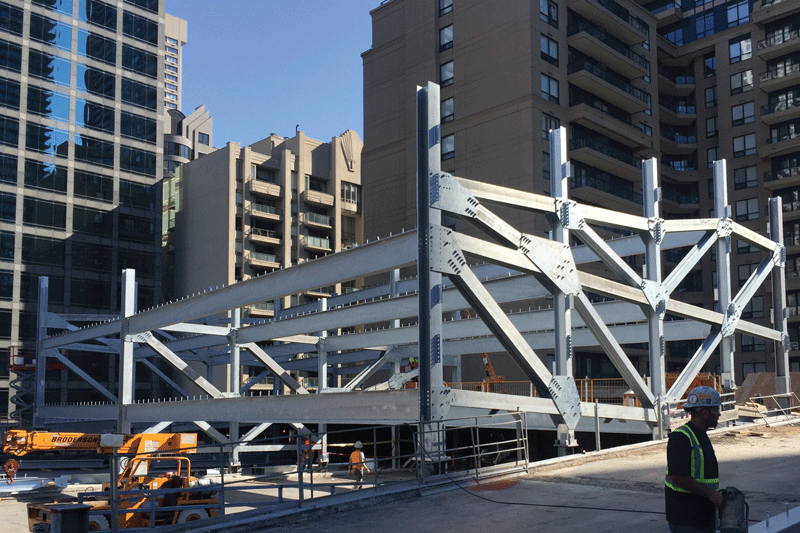Using Galvanized Steel as the optimal sustainable construction material

By Hellen Christodoulou
Canada has made a range of commitments to sustainability in the construction sector, focusing on reducing environmental impacts, promoting energy efficiency, and enhancing green building practices both domestically and globally. Domestically, these commitments include initiatives like the National Climate and Green Building Initiatives and Net-Zero Energy Ready Codes. Under the Pan-Canadian Framework on Clean Growth and Climate Change, Canada aims for all new buildings to be net-zero energy ready by 2030.
In line with this goal, the National Building Code now incorporates sustainability guidelines. Additionally, the Canada Green Building Strategy (CGBS) was launched to address the environmental footprint of the building sector. Programs like LEED Certification incentivize sustainable construction practices to further reduce the carbon footprint of buildings.
Globally, Canada has committed to reducing greenhouse gas emissions by 40-45% below 2005 levels by 2030, as part of the Paris Agreement. To achieve this, the construction sector has embraced stricter regulations, retrofits, and sustainable building practices. Canada is also an active member of the World Green Building Council (WGBC) and the Canadian Green Building Council (CAGBC). Together, these commitments promote low-carbon construction materials, finishes, and methods, helping owners, designers, and specifiers make more sustainable choices.
Recently, there has been a strong upswing to use galvanized steel as the optimal sustainable construction material. Galvanized steel stands out for its full life cycle benefits, which include durability, minimal maintenance, and recyclability. The galvanizing process coats steel with a protective zinc layer, preventing corrosion and significantly extending its service life. This longevity reduces the need for frequent replacements, cutting down on resource consumption, waste production, and energy usage associated with manufacturing and installation. The sustainability benefits increase over time, as fewer repairs result in a smaller environmental footprint.
At the end of its life cycle, galvanized steel remains highly recyclable. The steel industry has one of the highest recycling rates globally, and this closed-loop process reduces waste and conserves natural resources, supporting circular economy principles. Additionally, galvanizing requires less energy and fewer materials than alternative protection methods, resulting in lower emissions during production. Overall, galvanized steel aligns with eco-friendly practices throughout its life cycle, from production to end-of-life recyclability.
For asset owners, galvanized steel offers a high return on investment (ROI) by extending the life of steel structures and reducing the need for costly repairs or replacements. Its high recyclability also adds residual value at the end of an asset’s life cycle. Moreover, galvanized steel’s durability minimizes downtime associated with structural repairs, supporting operational continuity. These factors collectively reduce total lifecycle costs, making galvanized steel a sound choice for enhancing asset performance and longevity.
Almost any structure can benefit from galvanizing, including buildings, bridges, rebar, towers, electric power grids, and other steel structures. Painted galvanized structures, known as the Duplex System, mostly used for infrastructure exposed to the environment, can further extend the service life.
Hellen Christodoulou Ph.D., Eng., B.C.L., LL.B., M.B.A. is Executive VP, Engineering, Sustainability & Business Development at Corbec Inc.
- SUBSCRIBE TO THE DIGITAL OR PRINT ISSUE OF SABMAGAZINE FOR THE FULL VERSION OF THIS ARTICLE.
